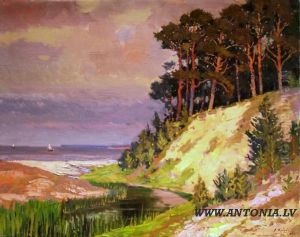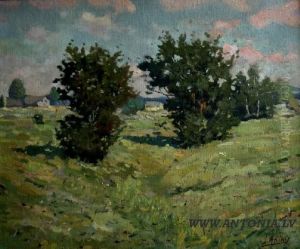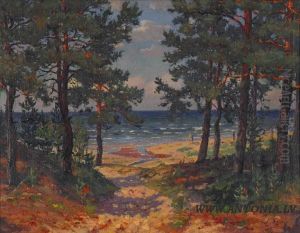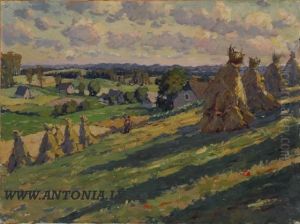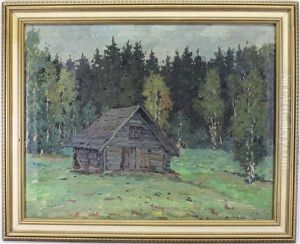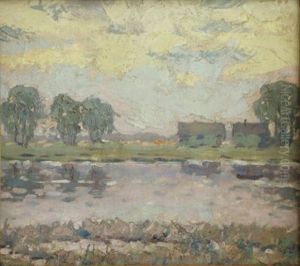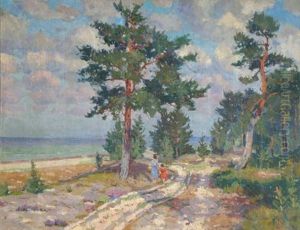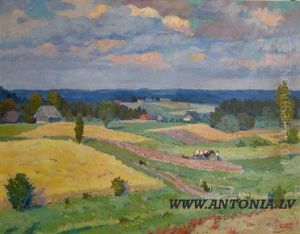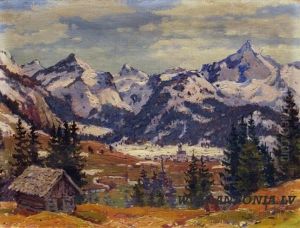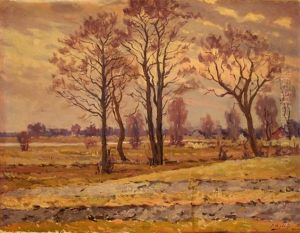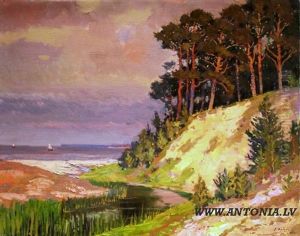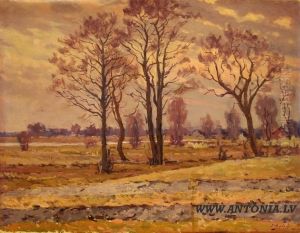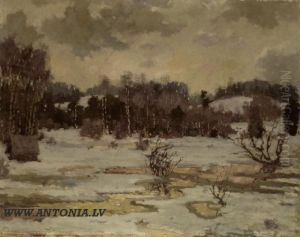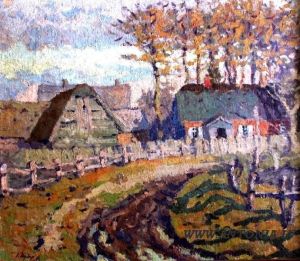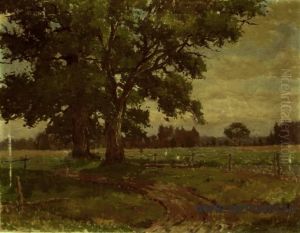Jekabs Apinis Paintings
Jekabs Apinis was a notable figure in Latvian art, remembered for his significant contributions to the realm of painting and graphic design. Born on July 7, 1880, in the small village of Bebri near Aizpute in the western part of Latvia, Apinis grew up during a period when the Latvian national identity was beginning to flourish amidst the broader context of the Russian Empire. His early life was marked by a deep connection to the Latvian countryside, which would later influence much of his artistic work, imbuing it with a sense of national character and an appreciation for the beauty of rural Latvia.
Apinis' educational journey in art began at the Kazan Art School in Russia, where he honed his skills and developed a profound understanding of artistic techniques and theories. His time in Kazan was pivotal, exposing him to a variety of artistic styles and movements. However, it was his further studies in Munich, Germany, that truly shaped his artistic direction. Munich, being a vibrant center for art at the turn of the 20th century, provided Apinis with exposure to the burgeoning movements of modernism and symbolism, which would go on to influence his style and thematic choices.
Throughout his career, Jekabs Apinis showed a remarkable versatility, working across a range of mediums including painting, graphic design, and book illustration. His paintings, often characterized by their vibrant use of color and dynamic compositions, depicted scenes from Latvian folklore, landscapes, and rural life. These works not only celebrated the beauty of the Latvian countryside but also sought to preserve Latvian cultural traditions and identity at a time when Latvia was undergoing significant political and social changes, especially during the periods of World War I, the subsequent Latvian War of Independence, and the later Soviet and Nazi occupations.
Apinis was also a prominent figure in the Latvian graphic design scene, contributing to the development of Latvian book art and illustrating numerous books and publications. His illustrations often reflected his deep engagement with Latvian folklore and mythology, bringing these narratives to life with a unique visual flair that resonated with both contemporary and future generations of Latvians.
Despite the challenges posed by the political turmoil of the 20th century, including the forced migration and occupation of Latvia, Apinis remained dedicated to his art and to the promotion of Latvian culture. He was an active member of various art societies and played a significant role in the Latvian art community, both in Latvia and during periods of exile.
Jekabs Apinis passed away on April 5, 1964, but left behind a rich legacy that continues to inspire and influence Latvian art and culture. His work is a testament to the power of art in expressing national identity and preserving cultural heritage, and he is celebrated as one of Latvia's most esteemed artists.
